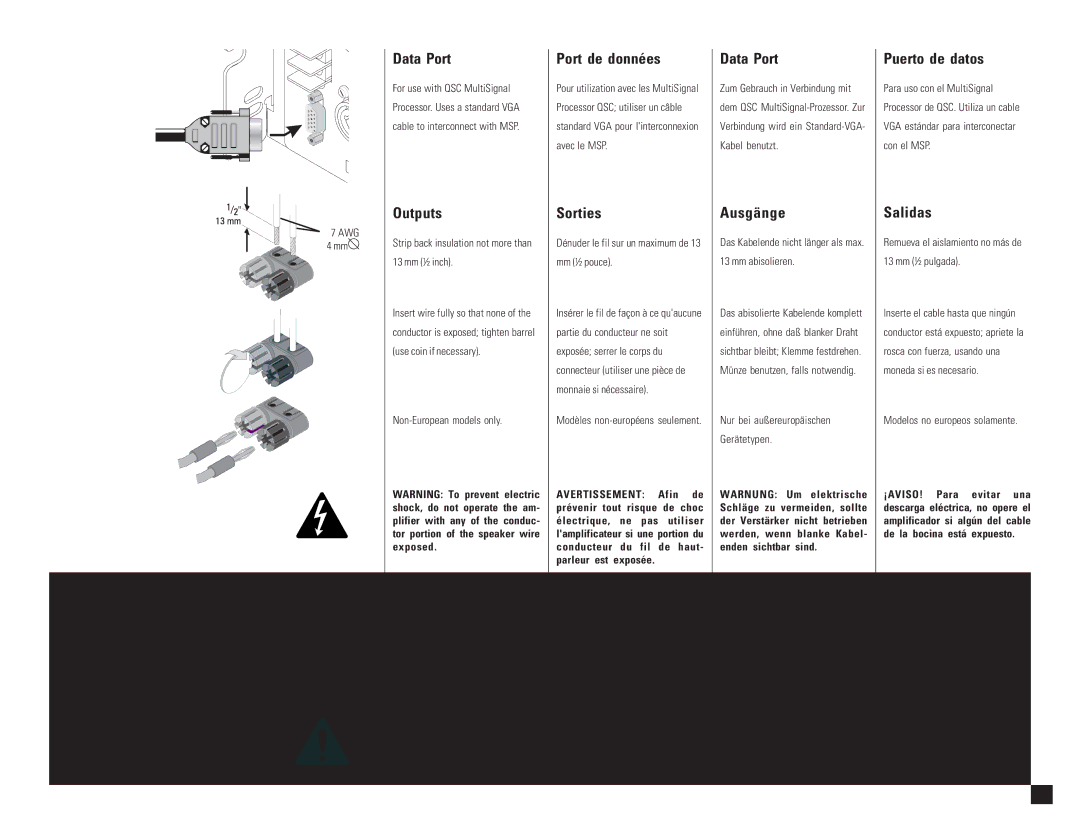PL-1.6HVX, PL-2.4MB, PL-1.0HV, PL-1.0, PL-1.4 specifications
QSC Audio has long been a leader in the audio industry, providing high-quality amplification solutions for various applications. Among their robust product offerings, the PL series stands out, encompassing models like the PL-1.8, PL-1.5X, PL-2.0HV, PL-1.4, and PL-1.0. Each of these amplifiers is designed with specific features and technologies that cater to both professional and performance needs.The QSC PL-1.8 is engineered for versatility, delivering up to 1200 watts per channel at 4 ohms. This powerhouse amplifier is designed to handle demanding audio environments, such as live performances or installations in larger venues. The onboard DSP (digital signal processing) ensures optimal performance, allowing users to tailor the sound to specific acoustics.
Next, the PL-1.5X offers similar power capabilities but comes equipped with a unique feature set intended for flexible application scenarios. This model supports both stereo and bridged modes, enabling it to adapt to various system setups effortlessly. The PL-1.5X is noted for its lightweight design, making it easier to transport without compromising on sound quality.
The PL-2.0HV is an advanced model tailored for high voltage applications. This amplifier can provide up to 2000 watts per channel at 4 ohms, making it suitable for larger sound systems that require high power output. Additionally, the PL-2.0HV incorporates advanced thermal management technology, ensuring durability and performance even during extended use.
For those needing a compact solution, the PL-1.4 is an excellent choice. It boasts a robust power output of 600 watts per channel at 4 ohms, making it perfect for smaller venues or as part of an intricate multi-channel system. Its compact chassis is designed for easy integration into any rig, making it an ideal option for mobile sound applications.
Lastly, the PL-1.0 rounds out the series, targeting users who require reliable performance in a more compact form factor. This amplifier provides 300 watts per channel at 4 ohms, making it suitable for small installations or monitoring setups. Despite its size, the PL-1.0 doesn’t shy away from high-quality audio, delivering clean, powerful sound.
In summary, the QSC Audio PL series exemplifies innovation and performance. Each model, from the PL-1.8 to the PL-1.0, is engineered with advanced technologies and design attributes that cater to a variety of audio requirements. Whether for live sound, installations, or mobile applications, these amplifiers provide reliable, high-quality audio across the board.

